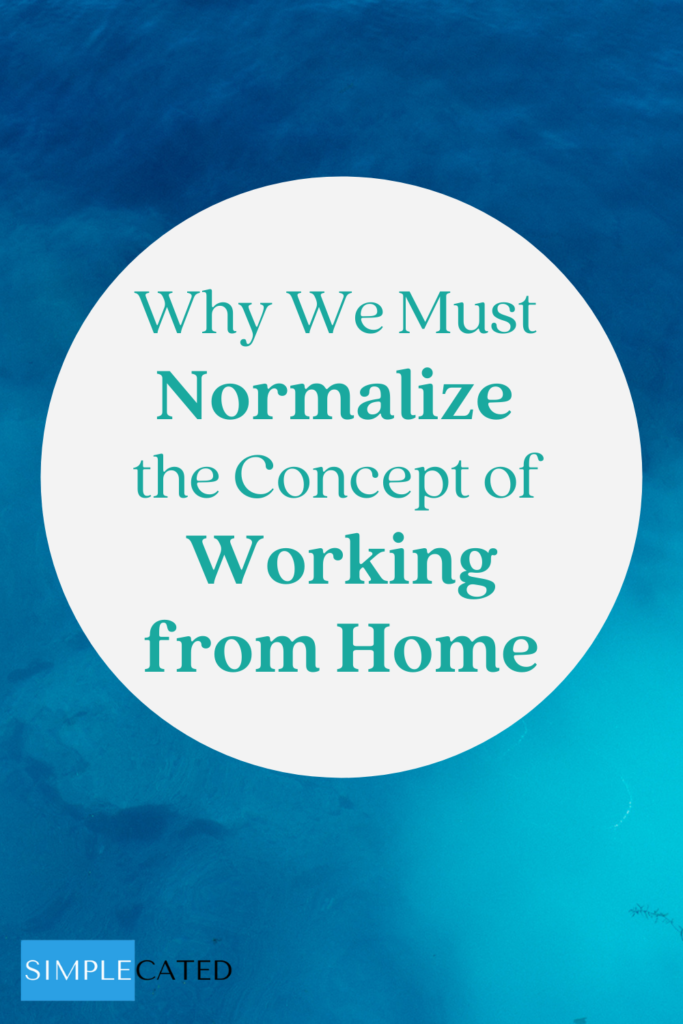In an article meant to spark debate (which it has successfully done), Luke Templeton suggests in Deutsche Bank’s “What We Must Do to Rebuild,” that there be a 5% government tax on employees who work from home, with the money being given to those who cannot. “People who can WFH and disconnect themselves from face-to-face society have gained many benefits during the pandemic,” he says. He points out that the percentage of Americans working from home increased from 5.4% to 56% during the pandemic and that most of them want to continue to work from home 1-3 days per week permanently. “Those who can work from home tend to have higher-than-average incomes,” Templeton notes. He explains that a 5% tax rate for an employee who makes $55,000 would equate to $10 per day, “…roughly the amount an office worker might spend on commuting, lunch, and laundry etc.”
How would the money be used? The money from the tax would be given to those who can’t work from home and are paid less than $30,000 per year. “From a personal and economic point of view, it makes sense that these people should be given a helping hand,” he says. “It also makes sense to recognise [the] essential workers that assume covid risk for low wages. Those who are lucky enough to be in a position to ‘disconnect’ themselves from the face-to-face economy owe it to them.”
As you can imagine, this is proving to be a pretty unpopular proposal. I likewise don’t support implementing this tax, as it would penalize those who work from home. While I disagree with the proposal, I do think this article sheds some light on common perspectives toward work from home that are detrimental, leading to two elements of workplace culture that need to be addressed.
Avoid an Us vs. Them Culture
We’ve made working from home into this ultimate perk of all perks. In many ways, the fault lies with HR. When recruiting for jobs, a huge emphasis tends to be placed on the ability to work from home. I’ve seen candidates who were weighing multiple job offers and were willing to take less money in exchange for working from home. Ironically, with current employees, many managers are so hesitant to allow work from home that employees have to practically beg for it. Once managers finally agree, it’s considered a “privilege” that can be removed due to performance issues. Without this pandemic we’re in, there’s no way this many employees would be working from home right now.
This mindset easily creates an “us vs. them” dynamic that isn’t good for anyone. Jobs that allow work from home are put on this pedestal that seemingly everyone else should strive for, leading to a devaluing of onsite jobs. Not only does this create jealousy among employees but it also causes employees to feel self-conscious and discontent with the job they have – even if they love it. Employees who love working from home feel the need to emphasize all the difficulties they experience to prove that everything isn’t perfect, and employees who love working onsite feel unappreciated because all the attention is going to the idea of working from home.
In working with a healthcare company, we had to be very mindful that the majority of our employees (doctors and nurses) couldn’t do their jobs from home. Without them, we wouldn’t have a company, so we had to be cautious not to make it sound like working from home was the best thing ever and everyone should want that kind of job.
Yes, it’s true that there are a lot of perks to working from home. (We’ll think about regular work dynamics with no pandemic in the mix.) In reality, though, there are always tradeoffs of some kind when it comes to any job and any job setting. There are pros and cons, and it depends on the person, the job, the boss, and the department which dynamic is best. I know people who love working from home and others who love working onsite. Some jobs can be done from anywhere while others can’t. We’re always going to have some sort of mixture of working dynamics and locations.
If we normalize the concept of working from home, we’ll be able to have much better conversations about it. We’ll be able to better evaluate which jobs/tasks can be done remotely and which ones can’t. We’ll look for ways to care for the wellbeing of employees in all kinds of work dynamics (instead of saving perks like flexibility for working from home). We’ll be able to truly celebrate the unique distinctions and differences between jobs and job dynamics without feeling guilty. We’ll be better prepared to value every job and make our companies great places to work for all employees. And our employees will have rewarding, meaningful careers regardless of where or how they work.
Pay a Living Wage
Speaking of valuing every job, let’s talk compensation. Pay is an important element of how much a job – and an employee – is valued. This pandemic has made us acutely aware of certain jobs we rely on for our wellbeing that can only be done onsite. We need grocery store cashiers, fast food workers, gas station attendants, housekeepers, healthcare professionals, meat-packing workers, and so many more to keep our everyday lives going. We also know that a lot of these jobs don’t pay very highly.
In Templeton’s article, he notes that there are 29 million workers in America who earn less than $30,000 per year and can’t work from home. This would include many workers who actually make above minimum wage. With the federal minimum wage being $7.25 per hour, a full-time employee working 40 hours/week makes $15,080 per year (roughly $1,256 a month). To top it off, many of these workers could potentially be near the poverty line, depending on their circumstances. For a family of 3 in 2020, the poverty line is considered to be $1,778 per month ($21,336 per year).
I’ve talked before about the importance of paying a living wage to front-line workers. It’s impossible to value your employees if you don’t pay them enough to make ends meet or have a decent standard of living.
It’s completely fine that some jobs pay more than others, and employees should certainly receive higher pay as they move into higher positions. That’s one of the great things about our country – the ability to create the life you want. At the same time, while continuing to financially reward employees in higher positions, companies must prioritize paying all of their employees an appropriate wage.
Bottom line – let’s normalize the concept of working from home. Let’s avoid an us vs. them culture and pay all employees a decent wage. Everyone benefits!
Photo credit: By Cathy Yeulet / Canva





